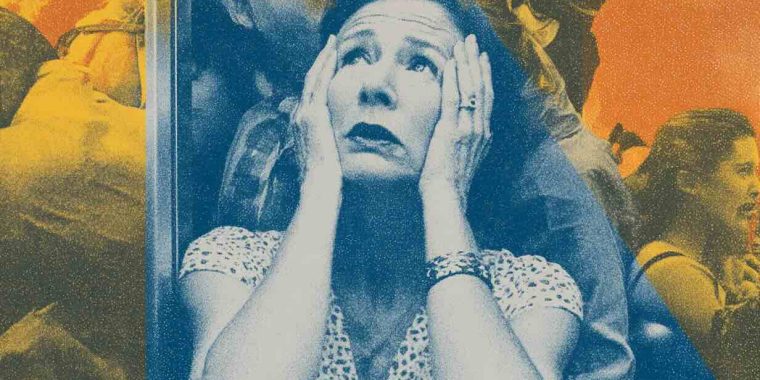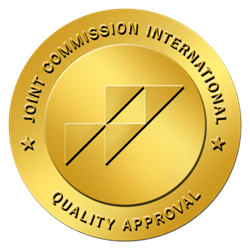Key Points
- Claustrophobia is an anxiety disorder involving intense fear of confined spaces.
- It’s triggered by situational factors, like elevators, or past traumas.
- Symptoms include panic, sweating, or dizziness in tight spaces.
- It can disrupt daily life, limiting travel or social activities.
- Therapies like CBT can reduce symptoms.
- Professional support is key for managing severe cases.
- With help, you can regain control and face confined spaces confidently.
What Is Claustrophobia?
Claustrophobia is a specific phobia characterized by an intense fear of being trapped or confined in small spaces, such as tunnels, crowded buses, or even MRI machines. It’s one of the most common phobias, affecting about 12.5% of people at some point, according to the National Institute of Mental Health1. Unlike general discomfort, claustrophobia can trigger severe anxiety, making everyday situations feel unbearable. For example, someone might avoid flying or public transit due to fear of being unable to escape. Dr. Martin Antony, a phobia expert, explains, “Claustrophobia often stems from a perceived loss of control in tight spaces”2. Understanding this fear is the first step toward managing it and reclaiming your freedom.
What Causes Claustrophobia?
It’s quite common for claustrophobia to develop from a mix of past experiences and biological factors. A traumatic event, like being stuck in an elevator as a child, can plant the seeds for this fear, linking confined spaces with danger. Genetics also play a role, those with a family history of anxiety disorders are more likely to develop phobias3. Environmental triggers, such as crowded or enclosed settings, can spark or worsen symptoms. Dr. Edna Foa, an anxiety specialist, notes, “The brain learns to associate tight spaces with threat, even when no real danger exists”4. In some cases, claustrophobia may also tie to emotional dysregulation, amplifying reactions to perceived confinement.
Symptoms of Claustrophobia
Claustrophobia can manifest in ways that feel overwhelming, both physically and emotionally. Common symptoms include rapid heartbeat, sweating, trembling, or shortness of breath when in a confined space. Some experience panic attacks, marked by dizziness, nausea, or a sense of impending doom. For instance, entering a small office might trigger an urge to flee or intense discomfort. The American Psychological Association notes that these reactions stem from the body’s fight-or-flight response, often disproportionate to the situation5. Recognizing these signs can help you understand when claustrophobia, rather than general unease, is at play.
How Claustrophobia Impacts Daily Life
It’s disheartening to realize how much claustrophobia can limit your life, from avoiding travel to skipping medical procedures like MRIs. People with this phobia might decline social events in crowded venues or choose longer routes to avoid tunnels, impacting work and relationships. The fear can also lead to isolation or depressioın, as constant avoidance breeds frustration. Studies show that untreated phobias can worsen anxiety disorders, affecting 1 in 10 people with claustrophobia1.
Left unchecked, it can create a cycle of fear and restriction, but effective treatments can break that pattern.
Strategies to Manage Claustrophobia
It’s reassuring to know that claustrophobia is highly treatable with the right tools. Cognitive-Behavioral Therapy (CBT) is a gold standard, helping 75% of patients reduce symptoms by reframing fear-based thoughts6. Exposure therapy, a CBT technique, gradually introduces you to confined spaces in a controlled way, building confidence over time. Relaxation techniques, like deep breathing or mindfulness, can calm the body’s stress response during triggers.
For severe cases, psychiatrists may prescribe anti-anxiety medication to ease symptoms alongside therapy. Dr. David Barlow, a clinical psychologist, says, “Facing fears step-by-step rewires the brain’s response to confined spaces”7.
When to Seek Professional Help
It’s natural to try managing claustrophobia on your own, but if it’s disrupting your work, social life, or health, professional support can make a difference. Signs to watch for include frequent panic attacks, avoiding essential activities like medical scans, or feeling overwhelmed by emotional reactions. These may signal a need for therapy or psychiatric care. At Still Mind Florida, our team offers tailored assessments and evidence-based treatments, such as CBT or medication, to help you regain control. Don’t let fear hold you back; reach out for help today.
Conclusion
Claustrophobia can feel like an invisible barrier, but with the right support, you can overcome it and live more freely. By understanding its causes, recognizing its symptoms, and exploring treatments like CBT, you can take charge of your mental health. This fear doesn’t have to define you, effective tools and professional care are within reach. At Still Mind Florida, we’re committed to helping you navigate this journey. Contact us at (561) 783-5507 to start building a life without limits.
References
- National Institute of Mental Health. (2023). Specific Phobia.
- Antony, M. M., & Barlow, D. H. (2020). Overcoming Fear of Heights and Small Spaces. New Harbinger Publications.
- American Psychological Association. (2022). Causes of Anxiety Disorders.
- Foa, E. B., & McLean, C. P. (2016). Treatment of Anxiety Disorders. Annual Review of Clinical Psychology.
- American Psychological Association. (2023). Panic Disorder and Phobias.
- National Institute of Mental Health. (2023). Anxiety Disorders.
- Barlow, D. H. (2002). Anxiety and Its Disorders. Guilford Press.




